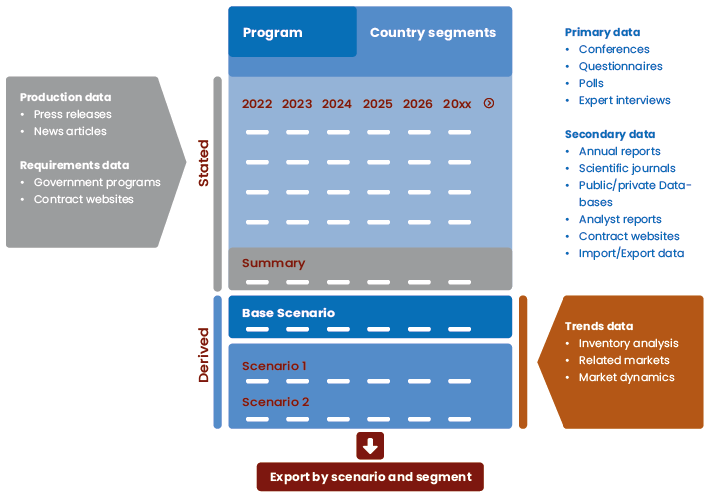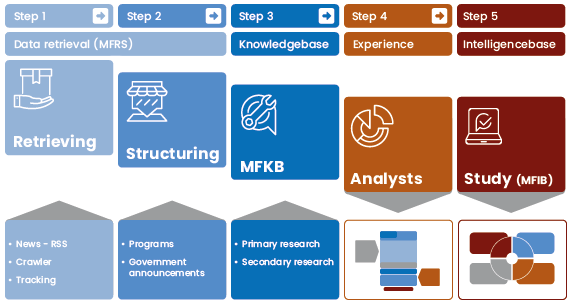Market forecast approach
There are many different approaches to market studies and forecasts. Our Market Forecast methodology uses market-tailored approaches to assess the impact of new technologies or force structures in creating trends and new opportunities, or the needs generated by the existing inventories according to a capabilities-based approach. In most cases, we can base our forecast on data triangulation of requirements-, production-, and trends data, with each one of them weighing differently, depending on the market characteristics.
Unique to the defence and aerospace market is the availability of a considerable amount of information on government requirements and plans. When this information (requirements data) is available then it weighs more in market-sizing. However, when there is a scarcity of information, then the analysts will rely on trends which are based on data collected during reference years in combination with market factors, like drivers and inhibitors.
In our data structuring process, we define programs for countries where we combine the requirements data from governments (customers) and production data from companies to one data set. This data set is the basis for further analysis based on trends. The programs will in general be similar to the programs that the defence organisations have in a country to fulfil a certain requirement, but they also could be fictitious programs when the requirement is not official or when it’s about a civil program.

Since data is the fuel for forecasts, we have developed a proprietary knowledgebase and forecast tool: MF Knowledgebase (MFKB). This is part of a platform that contains a Data Retrieval” module (MFRS) and the Intelligencebase (MFIB). The MFIB is used by our customers to access the studies.

Processing data in a structured manner in combination with expert procedures and skilled analysts leads to the best possible predictions, but not all the quantitative information is available for reason of protection and confidentiality, therefore forecasts, even the best-researched ones, are still exactly that - forecasts.
Impact Analysis
In addition to the main market forecast, we discuss and analyse relevant scenarios to show what the impact of certain events is on the market. The focus is on describing cases and explaining what the impact on the market is. Where the main market forecast is based on a combination of traceable data and trends from predictable forecast factors does the Impact Analysis consider scenarios with unpredictable factors like a geo-political potentiality or availability of funding. These events are less likely, but still feasible and therefore of interest to understand the market.